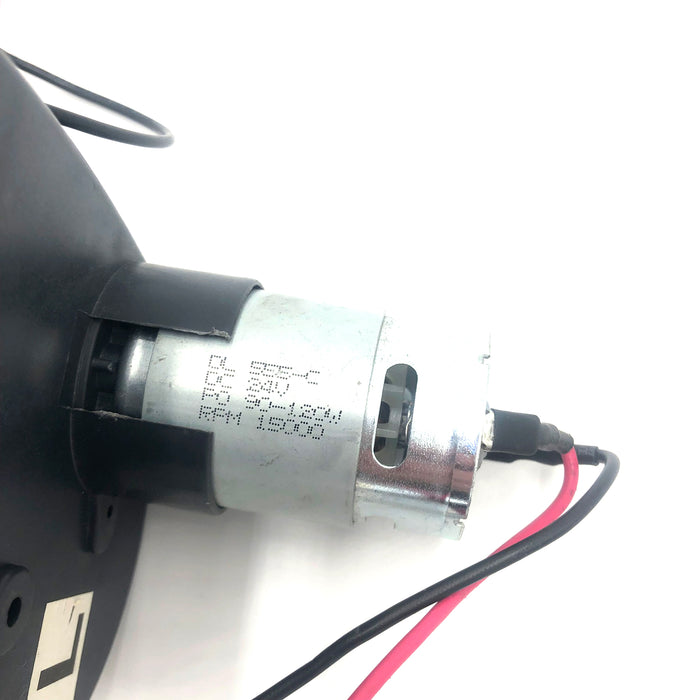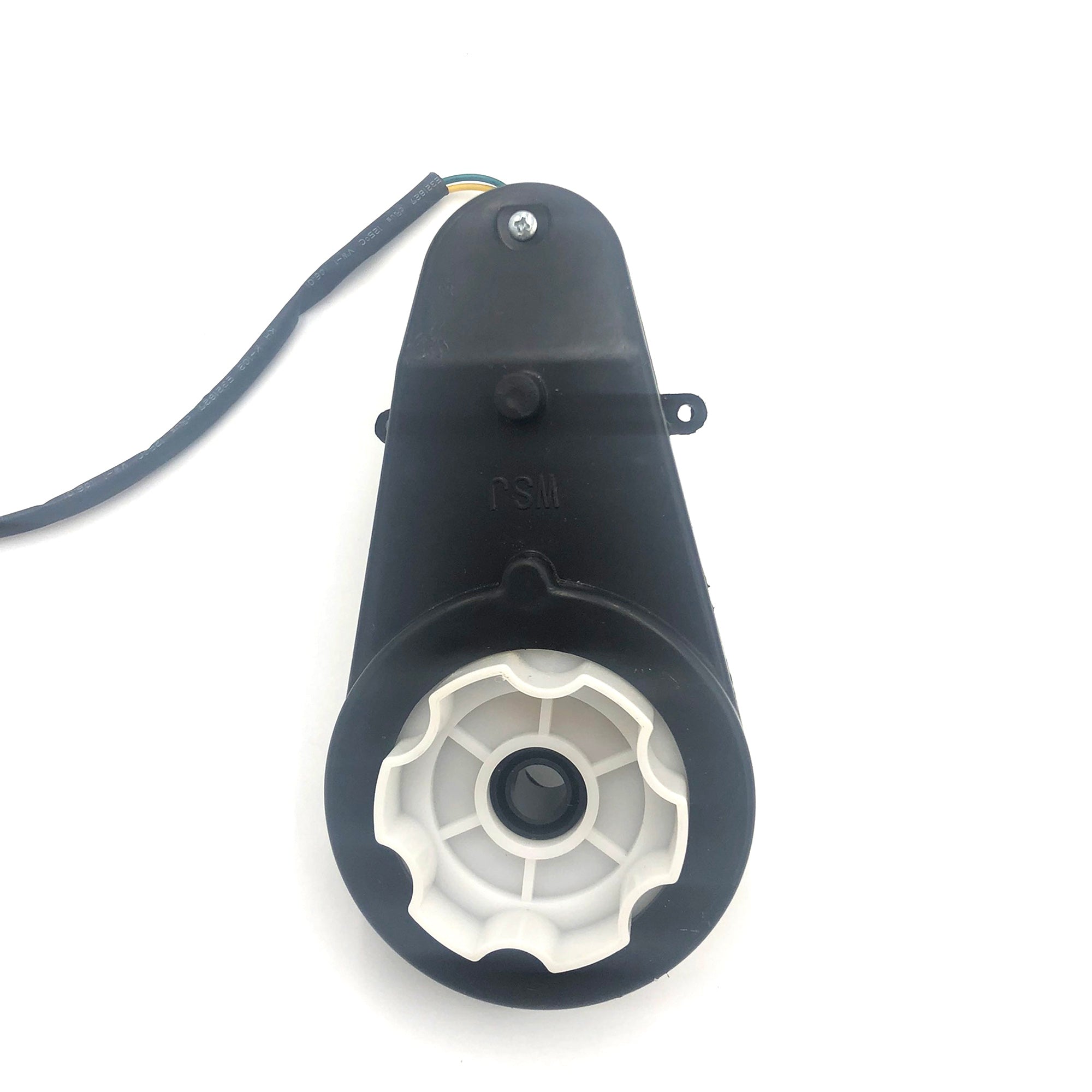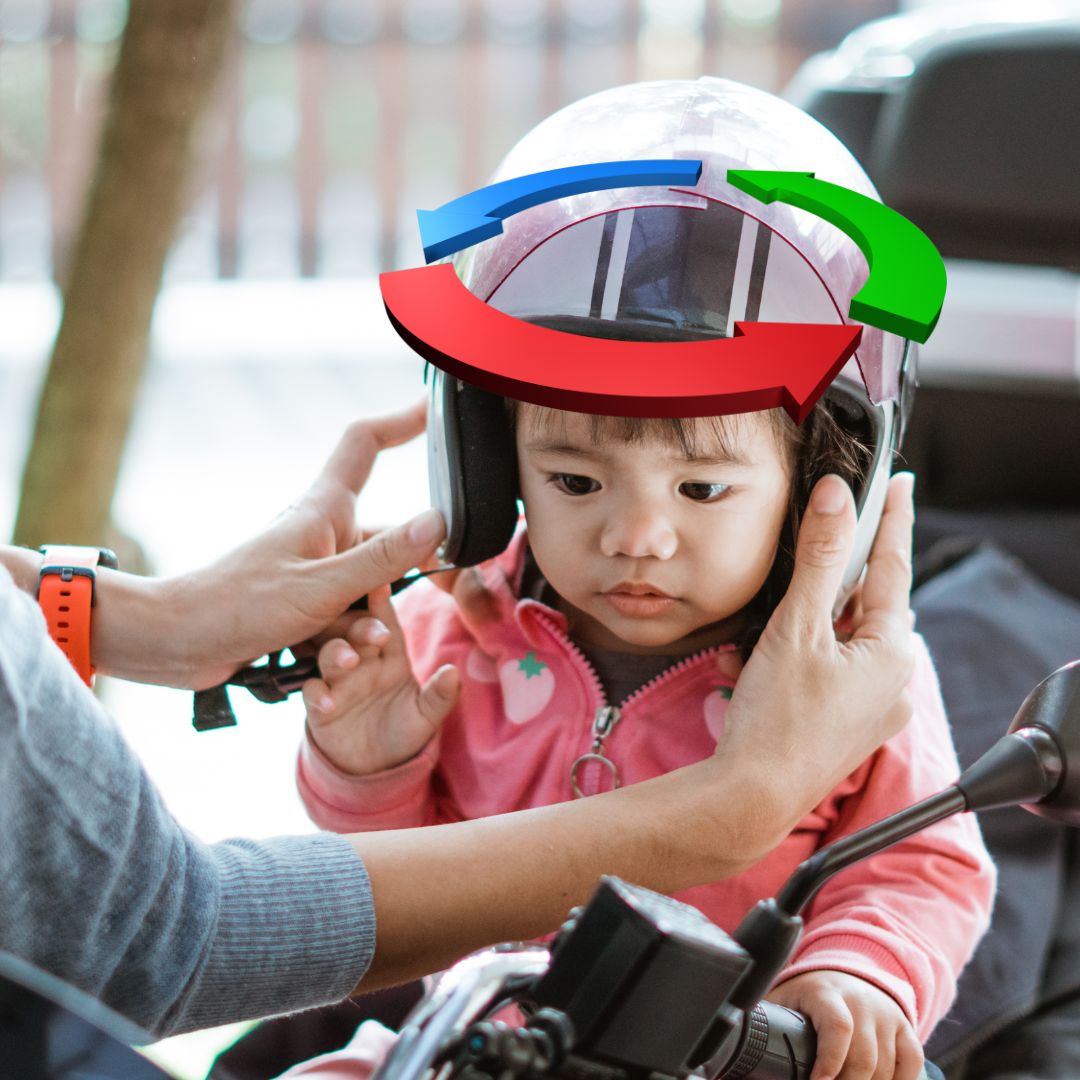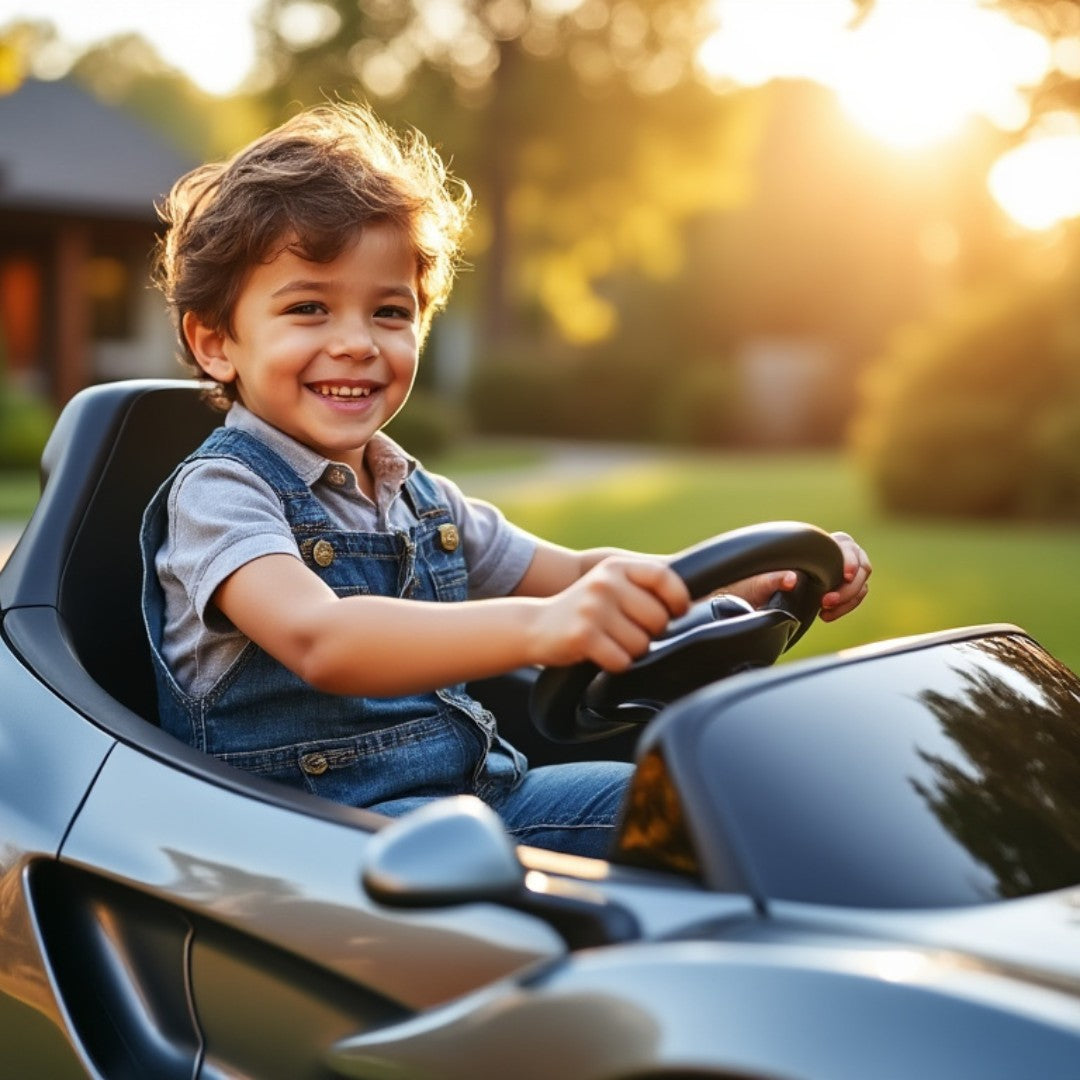
Updated: 16.05.25
Choosing the perfect ride-on toy for your child is exciting but can feel overwhelming with so many options. How do you pick a safe, durable, and fun toy that suits their age and interests? The key lies in understanding the motor—the heart of any ride-on toy.
This guide explores kids’ ride-on toy motors, helping you make an informed choice for safe and joyful playtime.
1. Why the Right Motor Matters
The motor in a kids’ ride-on toy determines more than just speed—it impacts safety, durability, and enjoyment. Whether your child is cruising the backyard or exploring varied terrains, the motor ensures reliable performance. Let’s dive into what you need to know to choose wisely.
2. Understanding Motor Voltage and Power
12-Volt Motors
Ideal for toddlers and young children, 12-volt motors offer a safe balance of excitement and control. Affordable and widely available, they’re perfect for first-time riders on flat surfaces.
24-Volt Motors
For older kids craving more adventure, 24-volt motors power larger toys with extra speed and strength. They handle outdoor play, including grass or slight inclines, while maintaining safety.
48-Volt Motors
Designed for performance-focused or large ride-on toys, 48-volt motors deliver unmatched power and speed. Best for older children, they require strict supervision due to their advanced capabilities.
Related: 6V vs 12V Battery Ride-On Toys: What’s the Difference?
Wattage Range
Wattage determines a motor’s power output, affecting speed, weight capacity, and terrain handling. Kids’ ride-on toy motors typically range from 20 to 250 watts.
Low Wattage (20–50 Watts)
Found in toys for young kids or indoor use, low-wattage motors ensure gentle, safe speeds on smooth surfaces, ideal for toddlers.
Mid-Range Wattage (50–150 Watts)
These motors suit a wide range of ages, offering enough power for outdoor play on grass or uneven surfaces while balancing safety and excitement.
High Wattage (150–250 Watts)
High-wattage motors power toys for older kids, handling rough terrains and heavier loads. They require robust safety features and supervision.
Choosing the Right Wattage
Select wattage based on your child’s age, maturity, and play environment. Higher wattage offers more power but may shorten battery life, reducing playtime between charges.
Undervolting Motors
Running a higher-voltage motor (e.g., 48V at 24V) reduces speed but may increase torque at lower speeds. Wattage, not voltage, primarily dictates torque and power output.
3. Types of Motors
Brushless Motors

Brushless motors are efficient, quiet, and low-maintenance, making them ideal for premium ride-on toys. Their advanced technology enhances performance and longevity.
Gearbox Motors

Gearbox motors provide extra torque, perfect for toys navigating inclines or carrying heavier loads. Options include right, left, or universal designs based on the toy’s structure.
Quick Reference Guide to Ride-On Toy Motors
| Motor Type | Voltage | Wattage Range | Best For | Advantages |
|---|---|---|---|---|
| 12-Volt Motors | 12V | 20–50 Watts | Toddlers and young kids | Safe, affordable, ideal for first-time riders |
| 24-Volt Motors | 24V | 50–150 Watts | Older kids seeking adventure | Balanced performance, outdoor use |
| 48-Volt Motors | 48V | 150–250 Watts | Large, performance-focused toys | High power, advanced performance |
| Brushless Motors | Varies | Varies | Premium toys | Efficient, quiet, low maintenance |
| Gearbox Motors | Varies | Varies | Toys needing torque | High torque, ideal for inclines |
4. Choosing the Right Motor for Your Child
Safety First
Match the motor’s power to your child’s age and the toy’s size. Higher voltage and wattage increase speed but require robust safety features like seatbelts and parental controls. Always check weight limits to ensure safe operation.
Performance and Playtime
Higher-voltage motors (e.g., 24V or 48V) offer faster speeds and longer playtimes but may drain batteries quicker at high wattages. Balance performance with battery life for uninterrupted fun.
Motor Efficiency
Efficient motors, like brushless models, convert battery power into motion with less waste, extending playtime and improving performance on inclines or rough surfaces. They also run cooler, enhancing durability.
Durability and Maintenance
Brushless motors last longer and require less maintenance than brushed motors, making them a cost-effective choice despite higher upfront costs. Regular upkeep ensures optimal performance.
Routine Maintenance Tips
- Battery Care: Charge every three months if unused, clean terminals, and store in a cool, dry place.
- Motor Checks: Inspect biannually for dust or debris, cleaning gently without water or harsh chemicals.
- Brake Maintenance: Regularly check brakes for functionality and adjust as needed.
- General Upkeep: Wipe down the toy after use, recharge per guidelines, and follow manufacturer maintenance schedules.
- Safety Practices: Perform maintenance away from children and adhere to weight and safety guidelines.
5. Practical Tips for Parents
Consider your child’s age, the toy’s size, and the play environment when choosing a ride-on toy. Prioritize safety features, match the motor to developmental needs, and perform regular maintenance to extend the toy’s life. Explore our ride-on cars and jeeps for safe, fun options.
6. Conclusion
Selecting the right motor—based on voltage, wattage, and type—ensures your child’s ride-on toy is safe, durable, and fun. Make an informed choice to spark joy and foster independence through play.
Frequently Asked Questions
What’s the difference between brushed and brushless motors in kids’ ride-on toys?
Brushed motors are affordable but wear out faster and need more maintenance. Brushless motors are efficient, quiet, and durable, ideal for premium toys with longer playtimes.
Can I upgrade my child’s ride-on toy motor for better performance?
Upgrading to a higher-voltage motor may boost speed but risks safety and warranty issues. Consult the manufacturer or a professional before modifying.
How does weight affect a ride-on toy’s motor performance?
Heavier loads reduce speed and strain the motor, potentially causing overheating. Stick to the toy’s weight limit for safe, optimal performance.
Why do some ride-on toys have dual motors?
Dual motors improve traction and power distribution, enhancing performance on uneven surfaces and providing smoother control.
How can I extend the life of my child’s ride-on toy motor?
Charge and store the battery properly, clean the motor biannually, check brakes, and follow manufacturer guidelines to ensure longevity.
Get in Touch 🚀
Loved our guide on “Kids’ Ride-On Toy Motors”? Ready for more tips on choosing the perfect ride-on toy?
We’re here to answer all your questions about kids’ ride-on toys! 🚗💨
Feeling curious?
Explore our collection at RiiRoo.com.
Or, connect via Live Chat to talk toys!






Share:
Budgeting for Go Karting as a Hobby
Go Karting Gear for Your Kids